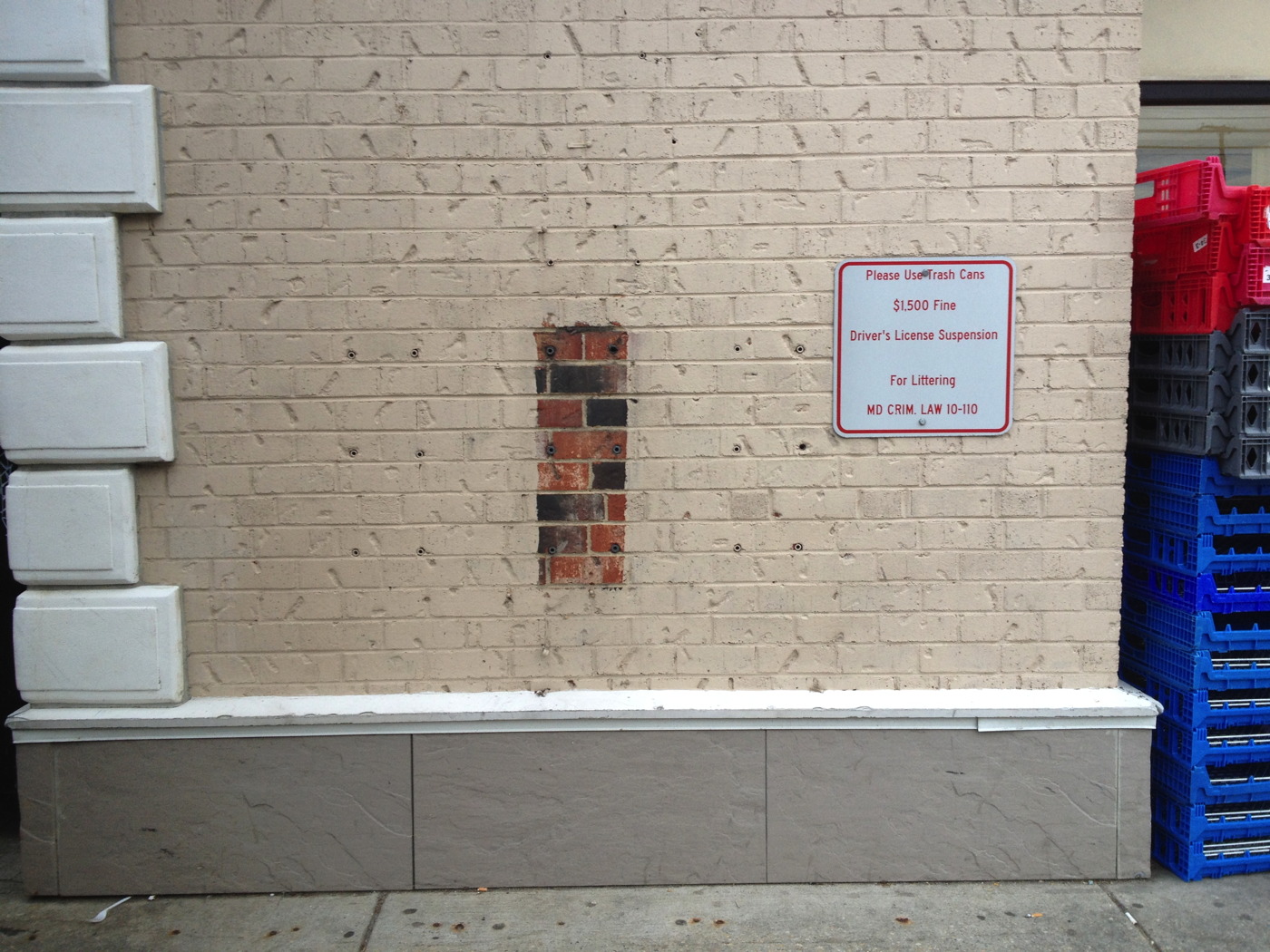
Untitled (Unpainted Wall), 2017, brick, concrete, 18 lag shields, exterior latex paint. Installation view, Chevy Chase, Maryland
In his 1977 Whitney catalogue, Michael Crichton wrote about the origin of Jasper Johns' 1967 painting Harlem Light:
It has a peculiar background. Johns was taking a taxi to the airport, traveling through Harlem, when he passed a small store which had a wall painted to resemble flagstones. He decided it would appear in his next painting. Some weeks later when he began the painting, he asked David Whitney to find the flagstone wall, and photograph it. Whitney returned to say he could not find the wall anywhere. Johns himself then looked for the wall, driving back and forth across Harlem, searching for what he had briefly seen. He never found it, and finally had to conclude that it had been painted over or demolished. Thus he was obliged to re-create the flagstone wall from emory. This distressed him, "What I had hoped to do was an exact copy of the wall. It was red, black, and gray, but I'm sure that it didn't look like what I did. But I did my best."And that, my friends, is how I am different from Jasper Johns: I got the picture.Explaining further, he said: "Whatever I do seems artificial and false, to me. They-whoever painted the wall-had an idea; I doubt that whatever they did had to conform to anything except their own pleasure. I wanted to use that design. The trouble is that when you start to work, you can't eliminate your own sophistication. If I could have traced it I would have felt secure that I had it right. Because what's interesting to me is the fact that it isn't designed, but taken. It's not mine." [p. 54-55]












